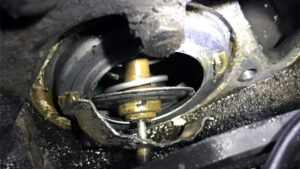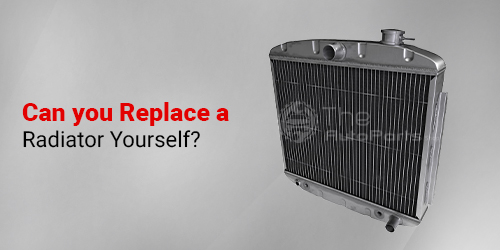It is routine maintenance that helps different parts perform optimally. Among significant maintenance tasks, we often forget to check the radiator that keeps the vehicle cool. Let’s know about this vital car component in detail and determine the radiator replacement cost, which is a crucial component that is kept in mind before fixing the problem.
The Role of a Radiator

A car’s engine generates excessive heat, and overheating could lead to an explosion. This engine overheating is generally taken care of by the car’s engine, which adds coolant into your engine and eradicates the engine block. The radiator allows the coolant movement through thin metal fins and quickly helps the air move out of the vehicle. You will find these components in different shapes and sizes in the market, but their usage still remains the same.
What Does a Radiator Consist Of?
Core
The core is the significant component and performs a major role in the smooth working of the radiator. It has a large metal block with tiny metal fins that allows the coolant to vent heat surrounding the radiator. The radiators have been classified as one core, two core, or three core.
Pressure Cap
The car coolant system undergoes a tremendous amount of pressure. A pressure cap up to 20 PSI generally creates this pressure. Therefore, removing the pressure cap is the best course of action which otherwise would lead to serious burns.
Outlet and Inlet Tank
The movement of the radiators from the hot part of the engine to coolant has been due to the inlet and outlet tank.
Transmission Cooler
Your vehicle uses the same coolant which is used by the transmission of your engine. Transmission fluid moves through the engine via steel pipes surrounded by the coolant that takes heat away from them. Certain vehicles have a special radiator that keeps the transmission fluid cool. A single radiator commonly performs this role.
Common Radiator Issues
m Below are some of the common reasons behind radiator failure. You just need to start searching for experts performing ‘Radiator Replacement Near Me’ or resolve the issues by yourself:
Leaks
A leaking hose is the most prominent radiator issue; neglecting them would lead to bigger issues. The coolant movement from the radiator to the engine creates a lot of pressure that would destroy the hose. This makes the coolant exit the system, ultimately resulting in overheating. If you notice a green fluid or something sweet from your car, it’s time to determine the radiator replacement price and get these issues fixed without delay.
Rust
Rusts appearing on the external region of your vehicle are clearly visible. If you don’t notice, that doesn’t mean it isn’t taking place. The combination of air, metal, and liquid often leads to rust. You would end up with holes and leaks with an excessively rusty radiator. If your vehicle is getting excessively hot, it’s time to start looking for a ‘Radiator Replacement Near Me’ and get the issue resolved. If you drive your vehicle in cool weather, ensure that the rusts are inspected every now and then.
Gunk and Other Issues
Built-up mineral deposits, also known as Gunk, are thick and goopy substances that clog the entire radiator. This built-up starts entering within the radiator, due to which it is unable to supply the proper amount of coolant to the engine. If the engine is getting hot too rapidly, it’s time to check the Gunk and get it removed.
Bad Pump or Thermostat

The engine is one part of the coolant system, and it is vital for all the parts to work properly for their smooth working. Issues with the thermostat will make the system incapable of releasing fluid into the radiator. Work with the failed pump and the system would be pressure deficit which is generally needed for the movement of the coolant.
Overheating at Idle State
The cooling system is the leading cause behind an overheated radiator or engine. If you notice that the temperature gauge is surging while sitting in the traffic or driving, it is due to the failed radiator fan. In such cases, it is better to determine the radiator replacement cost for the optimum working of your car.
Radiator Replacement Step By Step
- Jack up the car using jack stands, place the wheel clock behind the rear wheels, and set parking brakes.
- Take the petcock valve out or eliminate the lower radiator hose to eradicate the coolant from the radiator.
- Make the hose clamp loose using pliers or screwdrivers, which depends on the clamp design. Disconnect the radiator reservoir hose by twisting or pulling it away from the radiator.
- Perform the same steps on the upper and lower radiator hose.
- Disconnect the electrical connector of the cooling fan by pushing it on the tab and pulling it again.
- Now is the time to remove fan mounting bolts with ratchet, extension, and socket of the right size.
- Take the cooling fan out.
- Take a flare nut wrench to separate transmission cooler lines from the radiator.
- Now is the time to eradicate radiator and condenser mounting bolts.
- It’s time to take the radiator out and keep the new radiator in the same position.
- Connect the condenser mounting bolts, radiator mounting bolts along with the upper and lower hose. Attach the radiator reservoir hose again and fill the radiator with coolant.
- Allow the air entry from the system.
- Bring the vehicle to normal position and take the jack stand out. Lower the vehicle and take the wheel chocks out.
Cost of Maintaining a Radiator
A radiator hose replacement usually lasts between $150 to $200.The cost of coolant flush generally falls between $35 to $100 that you can save by fixing the issues on your own. Thermostat replacement costs around $200 to $250, while the water pump replacement generally falls between $300-$750.The average radiator pump replacement cost falls between $500 to $750.You can save money on the radiator or the pump by purchasing it from a reputable store like ‘The Auto Parts Shop’; also, go through the DIY videos and save money on unnecessary repairs.
The Bottom Line
Help your engine perform optimally by knowing the radiator pump replacement cost and installing a new radiator by yourself. If you don’t want to take a risk with your car, purchase your own radiator and pay the labor charges to the mechanic.
